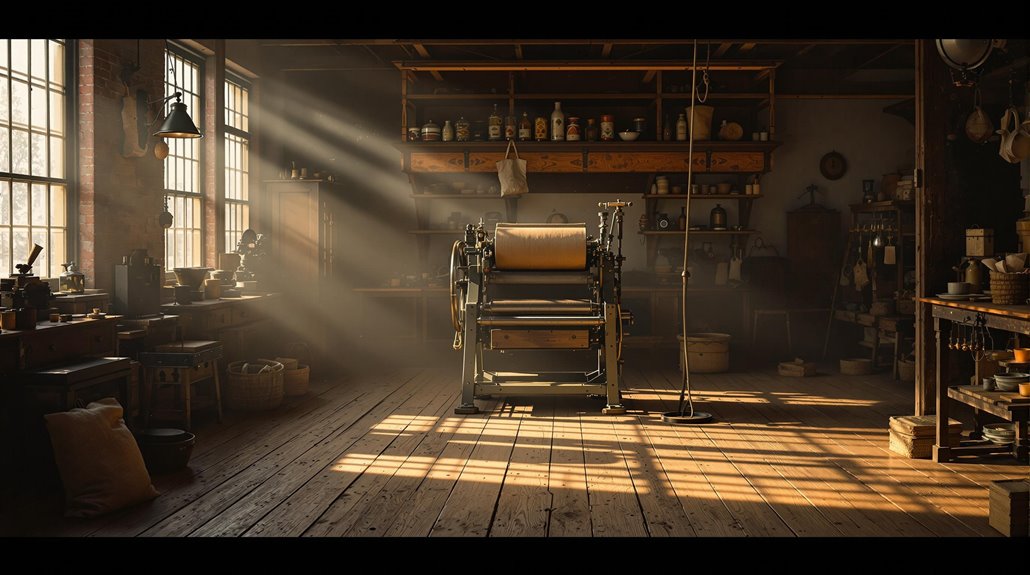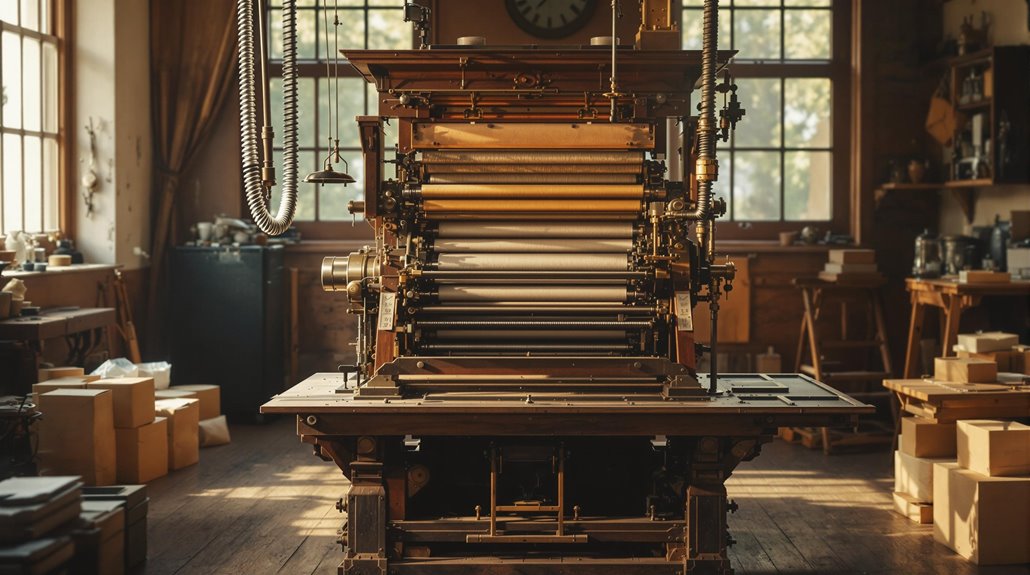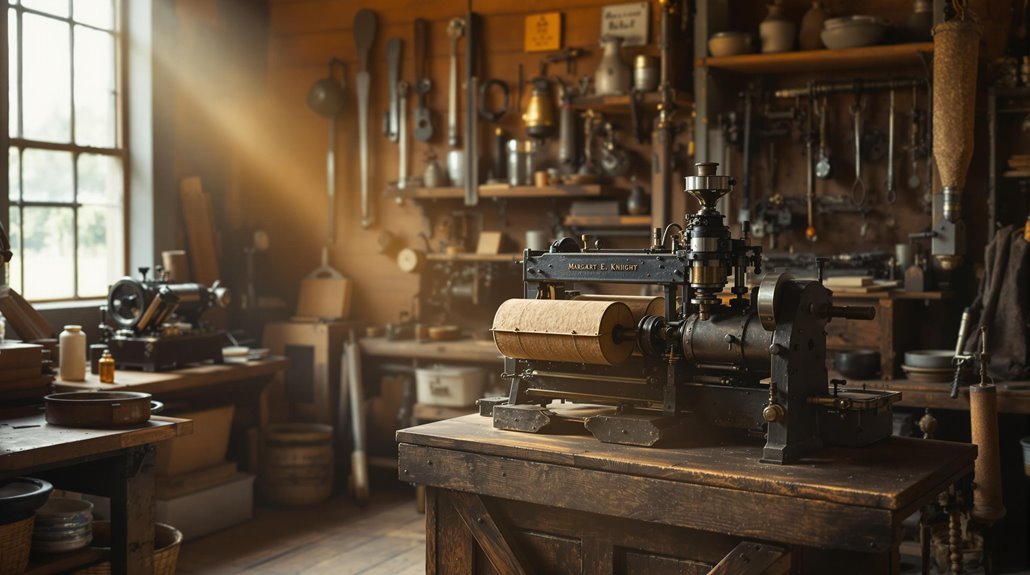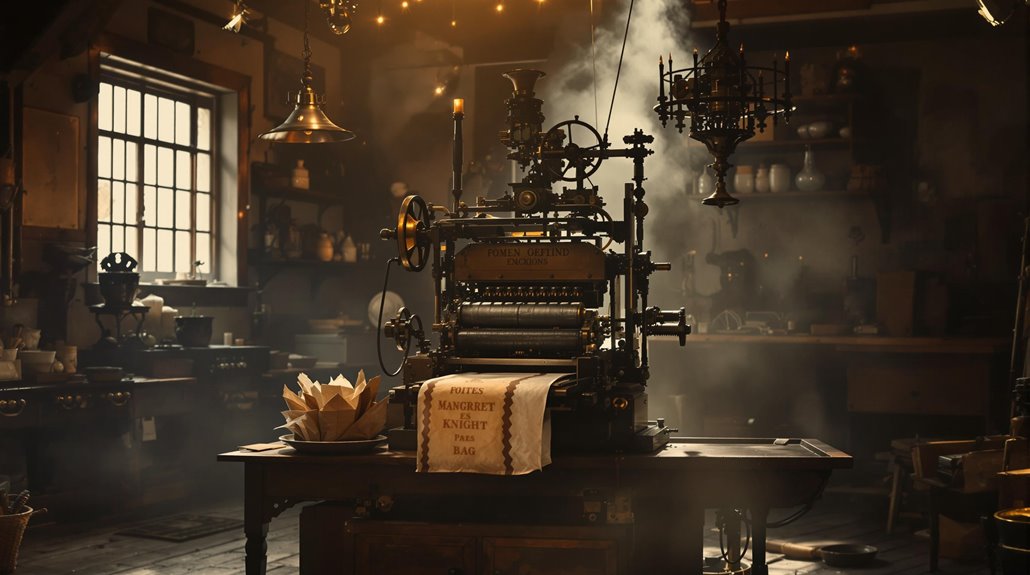Margaret E. Knight: The Paper Bag Patent That Nearly Cost Her in Court
You might think that the flat-bottomed paper bags you've used countless times were simply an obvious invention, but their creation sparked one of the most intriguing patent battles of the 19th century. When Margaret Knight developed her revolutionary paper bag machine in 1868, she didn't expect to defend her genius in court against a man who claimed women couldn't understand mechanical principles. The ensuing legal drama would test not just Knight's resolve, but the entire patent system's fairness toward women inventors.
From Textile Mills to Paper Bags: Knight's Early Years

While many inventors of the Industrial Revolution came from privileged backgrounds, Margaret "Mattie" Knight's journey began in humble circumstances. Born in 1838 in York, Maine, she lost her father at a young age, leading her family to relocate to Manchester, New Hampshire.
Her childhood inventions reflected an innate talent for creation, as she crafted kites, sleds, and toys for her brothers using woodworking tools instead of playing with dolls. Her passion for engineering would later lead her to secure at least 26 patents throughout her lifetime. Her family's cotton industry connections helped shape her early exposure to manufacturing, as her brothers worked as mill overseers.
The most significant of her early influences came at age 12 when she began working in the cotton mills. After witnessing dangerous working conditions, she invented a revolutionary safety device for textile looms that prevented injuries and deaths.
Though this innovation became standard equipment across factories nationwide, Knight didn't receive compensation, lacking knowledge about patents—a lesson that would shape her future endeavors.
The Birth of a Revolutionary Machine
After observing the tedious hand-folding process at Columbia Paper Bag Company, Knight recognized an opportunity to revolutionize the industry. In 1867, she began tackling the design challenges of automating flat-bottomed paper bag production, spending years perfecting her innovative machine concept.
You'll find that Knight's invention was remarkably sophisticated for its time. Her machine incorporated a three-step folding process and a pneumatic paper-feeding mechanism that could cut, fold, and paste bags automatically. Today, more than 7,000 machines worldwide produce flat-bottom paper bags based on her groundbreaking design.
To prove her concept, she first built a wooden prototype before creating the iron model needed for her patent application. The resulting invention, patented in 1871, transformed production efficiency by replacing manual methods with automated processes.
Her machine's ability to mass-produce uniform, flat-bottomed bags quickly became essential to the grocery and retail industries. Her success led her to establish the Eastern Paper Bag Company in Hartford, Connecticut, where she continued to innovate and improve her designs.
Charles Annan's Patent Theft and Legal Battle
Knight's groundbreaking invention soon caught the attention of Charles Annan, who observed her machine at a Boston iron foundry in 1870. He stole her design and quickly filed a fraudulent patent application, securing rights to the machine before she could.
When Knight discovered this patent infringement, she took immediate legal action. You'll find it remarkable that she hired a patent attorney at $100 per day and presented extensive evidence, including notebooks, photos, and supporting testimony from ironworkers. The case highlighted her dedication to sustainable packaging alternatives, aligning with her vision for eco-friendly solutions.
Annan's defense relied heavily on gender bias, claiming no woman could create such a complex machine. Despite his attempts to discredit her, Knight became the first woman in American history to win a patent interference case. Her machine proved revolutionary, effectively replacing the work of 30 laborers in paper bag production.
After a 16-day trial, she received Patent No. 116,842 in July 1871, setting a significant precedent for women inventors.
Triumph in Court: Proving Her Genius
Determined to protect her revolutionary invention, Margaret Knight launched a meticulous legal strategy that would make history.
You'll appreciate how she invested $100 daily (worth $2,409 today) in legal counsel and assembled an overwhelming arsenal of courtroom evidence, including blueprints, journals, and a working machine.
When Annan claimed she couldn't grasp mechanical complexities, Knight's legal strategies proved masterful.
She countered with testimony from ironworkers, demonstrated her deep mechanical knowledge, and presented nine detailed patent illustrations with explanations.
Having learned mechanics while working in cotton mills at age twelve, Knight's expertise was beyond question.
After 16 days of compelling testimony, the Commissioner of Patents awarded her Patent No. 116,842 on July 11, 1871.
Knight's triumph wasn't just personal; she became the first woman to win a patent interference case, blazing a trail for future female inventors in male-dominated industries.
Her achievements were so significant that she was later decorated by Queen Victoria for her innovative paper bag machine design.
A Game-Changing Innovation for Retail Industry

While shoppers today might take paper bags for granted, Margaret Knight's invention transformed the retail landscape of the 1870s. Her flat-bottomed paper bags sparked a retail evolution that quickly replaced traditional cloth sacks, crates, and boxes. Major department stores like Macy's and Lord & Taylor's immediately recognized the innovation's potential, adopting it as their standard packaging solution.
Knight's 26 patented inventions showcased her innovative spirit well beyond paper bags. Her invention didn't just change how you shop – it revolutionized the entire retail industry. Her automated machine could replace the work of 30 people, leading to widespread adoption across Europe and America.
Today, you'll find over 7,000 machines worldwide producing these bags. As sustainable packaging becomes increasingly important, Knight's paper bags continue to resonate with modern consumers, with 75% of Americans preferring them over plastic alternatives for environmental reasons.
The Lasting Impact of Knight's Paper Bag Legacy
The impact of flat-bottomed paper bags extends far beyond their initial retail success in the 1870s. You'll find Knight's invention has shaped sustainable packaging practices for nearly 150 years, offering an eco-friendly alternative to plastic bags.
Her automated manufacturing process revolutionized the industry, creating new jobs and transforming how people shop. The machine she developed in Cotton Mill Systems helped lay the groundwork for her later mechanical innovations.
Knight's triumph in the patent battle against Charles Annan didn't just protect her invention – it established a precedent for women's innovation in mechanical engineering.
You can now see her legacy honored in the Smithsonian Museum and the National Inventors Hall of Fame. Her flat-bottomed paper bag design remains relevant today, as retailers and consumers seek sustainable alternatives to single-use plastics.
Knight's ingenuity continues to inspire generations of women inventors and entrepreneurs in science and technology.











